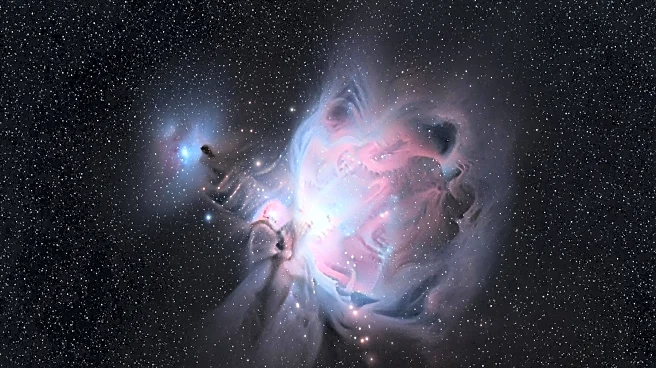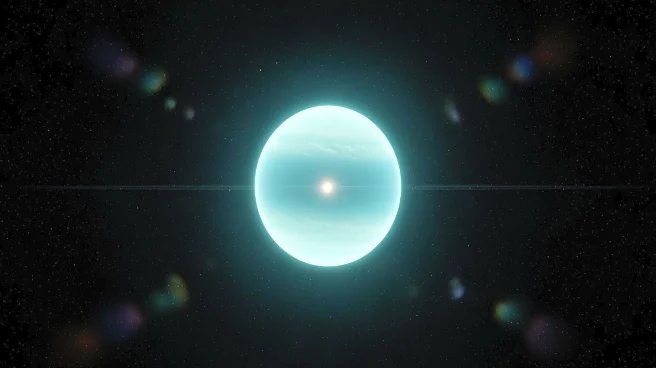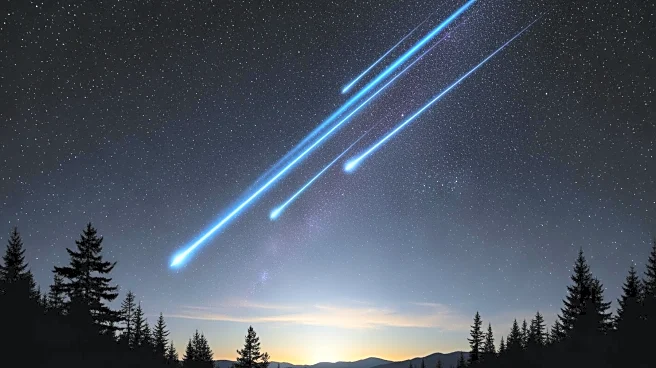What's Happening?
Astronomy enthusiasts are gearing up for a unique viewing opportunity of the Silver Sliver Galaxy (NGC 891) in the constellation Andromeda. This edge-on spiral galaxy, measuring 13' by 3' and glowing at magnitude
9.9, is best observed in a dark sky after moonset. Located 3.5° east of Almach (Gamma Andromedae), the galaxy offers a stunning view, especially through larger telescopes that can reveal its dark dust lane. The event coincides with other celestial occurrences, including the transit of Titan across Saturn on November 22 and a conjunction of Venus and Mercury in the eastern pre-dawn sky on November 24.
Why It's Important?
The observation of the Silver Sliver Galaxy provides a significant opportunity for amateur astronomers and skywatchers to engage with deep-sky objects. Such events foster interest in astronomy and science, encouraging educational activities and community gatherings centered around stargazing. The visibility of the galaxy, along with other celestial events like the Venus-Mercury conjunction, highlights the dynamic nature of the night sky and the importance of understanding astronomical phenomena. These events can inspire future generations to pursue careers in science and technology, contributing to advancements in space exploration and research.
What's Next?
Following the observation of the Silver Sliver Galaxy, astronomers and enthusiasts will continue to monitor upcoming celestial events. The conjunction of Venus and Mercury offers another viewing opportunity, requiring binoculars for Mercury's visibility. As the year progresses, skywatchers can look forward to more astronomical events, including meteor showers and planetary transits. These events provide ongoing opportunities for public engagement and education in astronomy, potentially leading to increased interest in telescope purchases and participation in astronomy clubs.
Beyond the Headlines
The observation of the Silver Sliver Galaxy and other celestial events underscores the importance of preserving dark skies for astronomical research and public enjoyment. Light pollution remains a significant challenge, affecting the visibility of stars and galaxies. Efforts to reduce light pollution can enhance the quality of astronomical observations and protect natural environments. Additionally, these events highlight the cultural significance of astronomy, as they bring communities together to share in the wonder of the universe, fostering a sense of global connection and appreciation for the cosmos.












